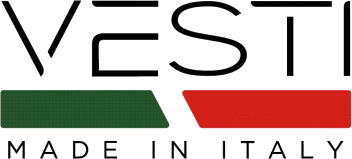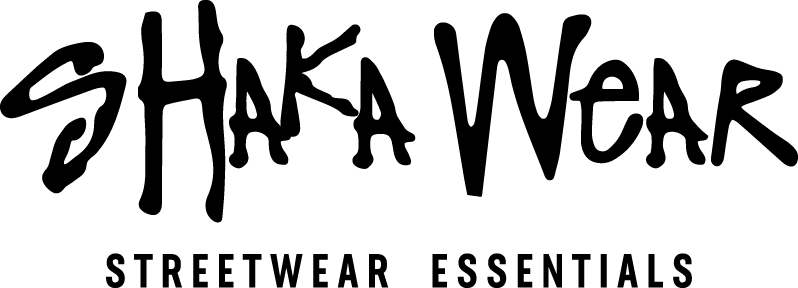Trending DIY Techniques: DTF, HTV, Patches

Posted by AllDayShirts on to Printing Business Tips, Printing Techniques.
Trending DIY Techniques: DTF, HTV, Patches
In the dynamic world of DIY apparel customization, staying on top of the latest trends and techniques is essential for creating standout pieces. Direct to Film (DTF) printing, Heat Transfer Vinyl (HTV), and heat press patches are three trending methods that have gained significant popularity. Each technique offers unique advantages, making them suitable for various applications, from personalized clothing to promotional items. In this comprehensive guide, we will explore these three trending DIY techniques, their benefits, and how they can be effectively used to create customized apparel that stands out.
Understanding the Basics
Before diving into the specifics of each technique, it's important to understand what DTF, HTV, and heat press patches are and how they differ from one another.
Direct to Film (DTF) Printing
DTF printing is a revolutionary technique that involves printing designs onto a special film and then transferring them onto fabric using a heat press. This method is known for its ability to produce vibrant, full-color prints with fine details.
Heat Transfer Vinyl (HTV)
HTV is a type of vinyl material that can be cut into various shapes and designs using a vinyl cutter. The cut vinyl is then applied to fabric using heat and pressure. HTV is popular for its durability and ability to create intricate designs.
Heat Press Patches
Heat press patches are embroidered or printed patches that adhere to fabric using heat and pressure. These patches are often used for adding logos, names, and designs to various types of apparel, offering a durable and professional finish.
Direct to Film (DTF) Printing
How DTF Printing Works
DTF printing involves a few key steps:
Design Creation: The first step is to create or select a digital design. This design can be created using graphic design software.
Printing: The design is printed onto a special film using a DTF printer. This printer uses inks that are designed to bond with fabric.
Powder Application: A special adhesive powder is applied to the printed film. This powder helps the ink bond with the fabric.
Curing: The printed film is then cured, or heated, to activate the adhesive powder.
Transfer: The design is transferred from the film to the fabric using a heat press. The heat and pressure ensure that the design adheres securely to the fabric.
Benefits of DTF Printing
Vibrant Colors: DTF printing can produce bright, full-color designs that stand out.
Fine Details: This method allows for the reproduction of intricate details, making it ideal for complex designs.
Versatility: DTF printing can be used on a wide range of fabrics, including cotton, polyester, and blends.
Durability: The prints are long-lasting and can withstand regular washing and wear.
Applications of DTF Printing
DTF printing is suitable for a variety of applications, including:
Custom T-Shirts: Create personalized t-shirts with vibrant, detailed designs.
Promotional Items: Add logos and designs to promotional items like bags and hats.
Team Uniforms: Customize team uniforms with detailed logos and player names.
Heat Transfer Vinyl (HTV)
How HTV Works
The process of using HTV involves several steps:
Design Creation: Create or select a design using graphic design software. The design should be mirrored before cutting.
Cutting: The design is cut out of the HTV material using a vinyl cutter. Each section of the design is cut from a different sheet of HTV.
Weeding: Excess vinyl is removed from around the design, leaving only the desired design on the carrier sheet.
Transfer: The HTV design is placed on the fabric, and a heat press is used to apply heat and pressure. This transfers the vinyl onto the fabric.
Peeling: After the vinyl has cooled, the carrier sheet is peeled away, leaving the vinyl design on the fabric.
Benefits of HTV
Durability: HTV designs are known for their durability and can withstand regular washing and wear.
Customization: HTV allows for a high degree of customization, with various colors, finishes, and textures available.
Ease of Use: HTV is relatively easy to use, making it accessible for DIY enthusiasts.
Cost-Effective: HTV is an affordable option for creating custom apparel.
Applications of HTV
HTV is widely used for:
Custom T-Shirts: Create personalized t-shirts with unique designs.
Sports Apparel: Add names and numbers to sports jerseys and uniforms.
Accessories: Customize hats, bags, and other accessories with HTV designs.
Heat Press Patches
How Heat Press Patches Work
The process of applying heat press patches involves a few key steps:
Design Creation: Create or select a design for the patch. This can be done using embroidery or printing techniques.
Patch Production: Once the design is finalized, the patches are produced, typically using high-quality fabrics and threads.
Heat Press Application: The patch is then placed on the garment, and a heat press machine is used to apply heat and pressure. This activates the adhesive on the back of the patch, bonding it to the fabric.
Cooling and Final Touches: After the patch is applied, it is allowed to cool, ensuring a strong bond. Any final touches, such as trimming loose threads, are then completed.
Benefits of Heat Press Patches
Durability: These patches are designed to withstand regular use and washing, ensuring that the customized garments remain in excellent condition for a long time.
Ease of Application: Applying heat press patches is a relatively simple process that can be done quickly and efficiently, making it suitable for both large-scale production and small DIY projects.
Cost-Effectiveness: Compared to other customization methods, heat press patches are often more affordable, especially for bulk orders.
Professional Finish: The clean, precise application of heat press patches gives garments a polished, professional look that is ideal for corporate branding, team uniforms, and promotional items.
Customization Flexibility: Heat press patches can be designed in various shapes, sizes, and colors, allowing for a high degree of customization to meet specific branding or design needs.
Applications of Heat Press Patches
Heat press patches offer numerous applications, including:
Corporate Branding: Add logos to uniforms and promotional items.
Team Uniforms: Customize sports uniforms with team logos and player names.
Fashion: Create unique fashion items with custom patches.
Promotional Items: Add branded patches to bags, hats, and other promotional products.
Comparing DTF, HTV, and Heat Press Patches
When choosing between DTF, HTV, and heat press patches for your DIY projects, it's important to consider the unique advantages and applications of each technique.
DTF vs. HTV
Color and Detail: DTF printing is ideal for designs that require vibrant colors and intricate details. HTV, while available in a variety of colors and finishes, is better suited for simpler designs.
Application: DTF can be used on a wide range of fabrics, including dark and light materials. HTV is also versatile but may require different types of vinyl for different fabrics.
Durability: Both DTF and HTV are durable, but DTF prints may have a slight edge in terms of longevity and resistance to wear and washing.
HTV vs. Heat Press Patches
Customization: HTV allows for high customization with various colors, textures, and finishes. Heat press patches offer a professional look and are ideal for logos and branding.
Application: HTV is suitable for creating detailed designs and lettering, while heat press patches are better for adding pre-made designs or logos.
Durability: Both techniques are durable, but heat press patches may provide a more robust finish for heavy-use items like uniforms and promotional products.
DTF vs. Heat Press Patches
Color and Detail: DTF offers vibrant colors and fine details, making it ideal for complex designs. Heat press patches provide a textured, embroidered look that adds depth to the design.
Application: DTF is versatile and can be used on various fabrics. Heat press patches are also versatile but are particularly well-suited for adding logos and branding to items like caps and bags.
Durability: Both techniques are durable, with DTF prints providing a smooth, integrated look and heat press patches offering a sturdy, professional finish.
Conclusion
In the world of DIY apparel customization, DTF printing, HTV, and heat press patches are three trending techniques that offer unique advantages for creating personalized garments and accessories. Whether you're looking for vibrant, detailed prints, durable and customizable vinyl designs, or professional-quality patches, each method has something to offer. By understanding the benefits and applications of DTF, HTV, and heat press patches, you can make informed decisions about which technique is best suited for your DIY projects. As these techniques continue to evolve and gain popularity, they provide exciting opportunities for creativity and personalization in the world of customized apparel.
- Christmas Fun Starts with Custom Hoodies & Crewnecks Using DTF Printing
- Thanksgiving DTF Apparel: Create Cozy, Colorful, and Custom Looks This Holiday Season
- Halloween DTF Apparel: Create Spooky Custom Looks with Jerzees 562 and 996 from AllDayShirts.com
- The Ultimate Guide to Soft Style Gildan Fleece: Comfort, Style, and Value for Every Wardrobe
- Why Acrylic Beanies Are a Unique Challenge
- Jerzees Fleece: The Perfect Blend of Comfort, Style, and Value
- Back-to-School DTF Printing: The Ultimate Guide to Custom Apparel for Students and Schools
- Image Enhancer for DTF Printing: How to Unlock Sharper, Brighter, and More Professional Prints
- How to Apply UV DTF: The Complete Step-by-Step Guide
- Introducing Print-on-Demand Hats: Featuring the Richardson 112, Otto 5-Panel Mid Profile Cap & High Crown Mesh Back Trucker



























